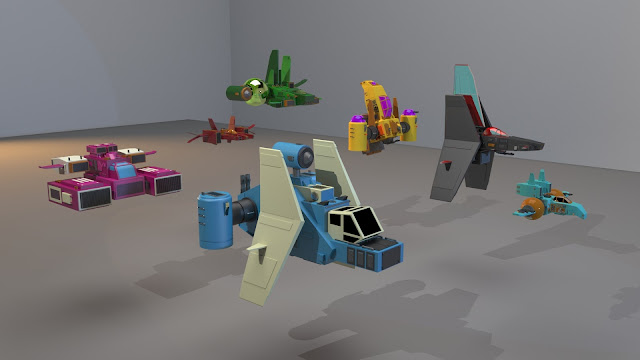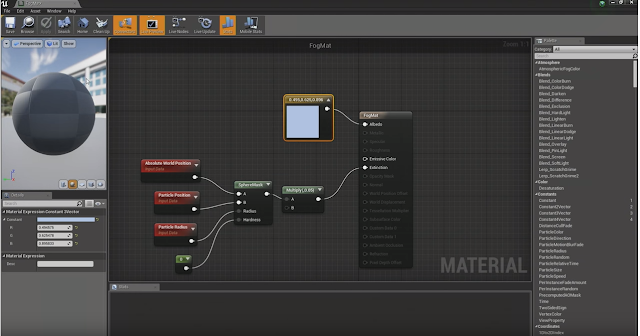Calm before the Storm
A few weeks ago I started on a small procedurally generated spaceship project. With the excitement of No Man's Sky I was enthusiastic to see what I could do with my 3D skills. A few hours later I had about 25 different parts, and started randomly attaching them with locators. I had decided that using a locator socket was a good idea to avoid any misplaced parts and at least try to get something fairly acceptable.
The results were horrible. The ensemble of parts looked like a Mary Shelly novel, far from the idea of creating over three thousand different models (I'll let you do the math). I was frankly annoyed.
I left the project to work on something else and naturally started thinking about what when wrong.
It was the human element.
That's what was missing or maybe more sophisticated accertane generation; but the point is an artist not only brings the technical skill of several years but also the lifetime of memories, creative inspirations and imitations to the table. This reminded me of a question an art student asked Neville Page at a Scott Robertson workshop. How long does it take to for an artist to be good?
I remember thinking that Art was subjective to the viewer and that this was a strange question, but maybe the student was trying to ask something else? The student was actually a company art director and he was trying to ascertain how long to train new employees.
This thought process was purely based in academic results, art not being the creative medium but rather the final product to be sold. Yes, I did agree that when you have deadlines and a business to run this is something that would need to be factorized into a formula to keep things on schedule but your not training artist, your developing technicians.
Neville tried to explain that concept designers don't turn it off and on, they are always on, always watching and committing images to memory. If they are only being taught this now, they will only have two or three years worth of ideas. Most concept designers start doing this subconsciously from birth. Then, when the time comes to put pen to paper the rich experience of life will guide the artist to burst with ideas and hopefully innovation. But I dont think company direct got it.
They settled with an artist with technical ability will be able to produce fantastic work within two or three years.
So, I decided to manually place spaceship parts together and try to make something that could at least be used for background props, or maybe even small 3D printed toys.

Not too bad, seven ships that could hold their own.

Maybe I could squeeze out some more but I think this is OK for this test. The repetition is too obvious and the combination gives each ship its own identity, a story and background.
You will never get a perfect ship using this method as it can never achieve more than the sum of its parts but its a great way to start quickly visually and present ideas to move closer to a final design.
I hope you enjoy the result as much as I had making them.













The results were horrible. The ensemble of parts looked like a Mary Shelly novel, far from the idea of creating over three thousand different models (I'll let you do the math). I was frankly annoyed.
I left the project to work on something else and naturally started thinking about what when wrong.
It was the human element.
That's what was missing or maybe more sophisticated accertane generation; but the point is an artist not only brings the technical skill of several years but also the lifetime of memories, creative inspirations and imitations to the table. This reminded me of a question an art student asked Neville Page at a Scott Robertson workshop. How long does it take to for an artist to be good?
I remember thinking that Art was subjective to the viewer and that this was a strange question, but maybe the student was trying to ask something else? The student was actually a company art director and he was trying to ascertain how long to train new employees.
This thought process was purely based in academic results, art not being the creative medium but rather the final product to be sold. Yes, I did agree that when you have deadlines and a business to run this is something that would need to be factorized into a formula to keep things on schedule but your not training artist, your developing technicians.
Neville tried to explain that concept designers don't turn it off and on, they are always on, always watching and committing images to memory. If they are only being taught this now, they will only have two or three years worth of ideas. Most concept designers start doing this subconsciously from birth. Then, when the time comes to put pen to paper the rich experience of life will guide the artist to burst with ideas and hopefully innovation. But I dont think company direct got it.
They settled with an artist with technical ability will be able to produce fantastic work within two or three years.
So, I decided to manually place spaceship parts together and try to make something that could at least be used for background props, or maybe even small 3D printed toys.

Not too bad, seven ships that could hold their own.

Maybe I could squeeze out some more but I think this is OK for this test. The repetition is too obvious and the combination gives each ship its own identity, a story and background.
You will never get a perfect ship using this method as it can never achieve more than the sum of its parts but its a great way to start quickly visually and present ideas to move closer to a final design.
I hope you enjoy the result as much as I had making them.















